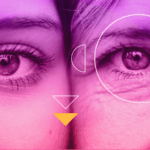By Brisa Vicente, Partner and co-CEO of São Paulo-based creative agency, SOKO
Over the last decade, identifying as a “data-driven marketer” has practically become something of a second title for CMOs and other brand stewards. However, a crucial distinction exists between being “data-driven” and being “data-dominated.” Any imbalance leaning toward the latter shows itself when crafting creative advertising narratives.
The advent of generative AI tools like ChatGPT and Google Bard has fueled the growing belief that technology alone can guide advertising strategies. Yet, the essence of storytelling in advertising lies in exploring deep emotional truths that resonate with a brand’s message and the audience they hope to capture. It could be a message of joy or it could be a story that tugs at the heartstrings. Problem-solving could be the soul of the story. Or it could simply be a complex tale that involves a variety of angles meant to show the ways a brand can deliver what its audience wants and needs.
The point is, art and science needn’t be viewed as an “either/or” proposition, despite the natural right brain/left brain dynamic the topic invariably stokes. The question, then, is how can the seemingly opposite poles of creativity and analytics inform each other?
The Right Questions
Data, undoubtedly, plays a pivotal role in shaping storytelling. It offers insights into brand lift and engagement, and can track sales to specific thematic resonances with audiences.
However, being “data-driven” means leveraging data to inform and enhance storytelling, not letting it dominate the creative process. The limitations of a solely data-reliant approach are apparent — one risks neglecting the emotional and human aspects that are integral to impactful advertising.
We must remember, data tells us the “what,” but often misses out on the “why” or the “how” that only human insight can build upon.
Defining Storytelling in Advertising
In advertising, storytelling transcends mere product promotion; it is a medium through which brands can connect with audiences on an emotional level.
This connection can be made as effectively through a short-form video or an out-of-home display as it can through a traditional 30-second TV spot, because the power of a story lies in its emotional truth – the core message that aligns with the brand’s identity and values and provides a forum for conversation and community.. Whether it’s a tale of triumph, a story of innovation, or a narrative of empathy, the emotional truth is what makes a brand’s communication memorable and relatable.
Emotional Truths and Human Connection
The essence of storytelling in advertising is its ability to evoke emotions. Different emotional truths – joy, problem-solving, complexity — resonate differently with different audiences, but they all aim to build connections that not only humanize the brand but also make its message more authentic and trustworthy.
Heinz Sees Red
Data helps you know your audience and see the issues they face. In the spring of 2023, our client Heinz wanted to connect with Gen Z. We knew that brands that emphasize personal expression, be it via tailored products or immersive marketing experiences, tend to strike a chord with younger consumers. It’s practically universal: 95% of Gen Zers engage in various forms of visual communication. And they have a strong preference for brands that cater to their individualistic sensibilities.
So we teamed up with tattoo ink manufacturer Electric Ink to promote the use of “Heinz red tattoo pigment,” which is crafted with the same meticulous attention to ingredients synonymous with the brand’s ketchup production. As the data pointed out, over 225 million consumers were engaged, as more than 10,000 orders of the Heinz ink were ordered by tattoo artists, who would go on to continue experiential effort.
Balancing Data and Creativity in Storytelling
The best advertising lies in finding a balance between data insights that can be filtered through creative flights. While data is invaluable in understanding audience demographics, mood, and tone, it should inform rather than dictate the creative process.
As the example above shows, data and information are tools for inspiration. However, it takes dedicated creative professionals to leverage that data and use it to understand what will ring true. The story’s heart and soul must always be driven by human creativity and insight.
This is more necessary than ever as the emergence of generative AI in advertising presents both opportunities for faster, more target data, and challenges using that data as a starting point for longer conversations .
A storyteller’s vision should steer the AI engine. Technology that amplifies analysis, rather than overrides the human element of creativity, is the only way to go.






